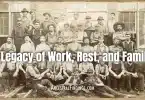What is a covered bridge? It is a timber truss bridge that has a roof, a deck, and siding. Most covered bridges create a nearly complete enclosure. The covering on the bridge is designed to actually protect the bridge and extend its lifespan. This is because uncovered wooden bridges usually only last about twenty years before needing to be repaired or replaced, while covered wooden bridges can last as long as a century before any work needs to be done on them.
While most covered bridges are designed for the car, wagon, or foot traffic, some of them are made for trains. The bridges can accommodate the extra weight of a train because they are fortified with heavy timbers and double latticework on them. Also, most covered bridges were built to go over streams, and most have just a single span. Almost all of them only accommodate one lane of traffic; there are only a small handful of two-lane covered bridges, and they have a third central truss to keep their platforms held up and strong enough to accommodate the additional traffic.
Covered bridges are considered romantic, and are popular tourist destinations, especially for taking pictures. However, they are also pretty rare these days. Only about 1,600 of them still exist on the entire planet. There used to be a lot more of them, but the vast majority were eventually taken down because of neglect and the high cost of maintaining them. Another reason for the small number of remaining covered bridges in the world is because most of them are located in remote, rural areas, which makes them excellent targets for vandalism, arson, and other types of destruction because no one is looking at the vandals, so they can wreak their bridge havoc with impunity.
The oldest covered bridge in the world that is still standing is the Kapellbrucke Bridge in Switzerland. The modern kind of timber truss covered bridges were first invented in Switzerland in the mid-1700s.
There were more than 12,000 covered bridges built in the United States over the past two and a half centuries, with about 3,500 of them being located in Ohio. However, the most recent count of existing covered bridges in the United States, which was done in 2018, showed that less than one thousand of them were still standing.
The first known covered bridge to be built in the United States was the Permanent Bridge in Philadelphia. Constructed in 1805, it spans the Schuykill River and lasted well beyond the estimated forty years that the architect suggested. It was finally removed in 1850 to allow a new bridge to be constructed there that was more appropriate for accommodating railroad tracks.
Most covered bridges in the United States were built between 1820 and 1900, with the highest concentration of construction being conducted between 1825 and 1875. The longest covered bridge ever built in the United States was built across the Susquehanna River in 1814. At 5,960 feet long, it was washed away during the flooding of 1832.
Some of the oldest covered bridges in the nation are the 1825 Hyde Hall and Hassenplug bridges in New York and Pennsylvania, the 1820 Haverhill-Bath bridge in New Hampshire, and the 1829 Roberts bridge in Ohio.
The mid-1800s brought cheaper versions of wrought and cast iron to the world, and the trusses of covered bridges began to be built with this metal instead of wood. Architects found that the metal trusses did not need to be protected from the elements like the wood ones did, and so the coverings on the bridges were no longer necessary elements of the construction. Also, with higher traffic using the bridges, most people did not want to wait their turn to use a single lane bridge, and so bridge construction moved away toward covered one-lane bridges and to uncovered two-lane bridges.
The United States is not the only place in North America that has covered bridges. Canada also has them. But, like in the United States, changing times have greatly reduced the number of them that were once in Canada. There were about a thousand covered bridges in Quebec alone in 1900. Since 1969, the number of covered bridges that still exist in the entire Canadian nation went from about four hundred to under two hundred.
Compared to the United States, Canada was relatively late to the game in getting covered bridges into their country. The greatest number of covered bridges in Canada were constructed in the 1930s, far after the United States had stopped building them at all. The initial design of Canadian covered bridges was quite varied, but they standardized by about 1905 to the Town Quebecois variety, which was a variation on the lattice truss design that the town of Ithiel patented in 1820.
About five hundred of these Town Quebecois covered bridges were built between 1900 and 1950. The last covered bridge known to have been built in Canada was constructed in 1958 in Lebel Sur Quevillon in Quebec. The province of Quebec currently has eighty-two covered bridges, which includes the province’s longest covered bridge, the Felix Gabriel Marchand Bridge.
Canada can also boast being the home to the current longest covered bridge in the world. This is the Hartland Bridge in New Brunswick. New Brunswick had about four hundred covered bridges in 1900, but now has fifty-eight in the entire province.

Because they are romantic in nature and appearance, covered bridges have appeared, and even played important, central roles, in some modern works of fiction. Probably the best known of these is the 1992 novel, The Bridges of Madison County. This book highlighted the Cedar Covered Bridge, a real bridge which has since been damaged by arson (in 2002, a decade after the novel was released); a replica of the bridge was established where the damaged bridge once was, and the replica was damaged (again, by arson) in 2017.
Other works of fiction to feature covered bridges in America include the Edgar Allan Poe poem Never Bet the Devil Your Head, the Joe Hill novel NOS4A2 (where a character uses a covered bridge called The Shorter Way to teleport across vast distances), and the opening sequence from the 1980s TV series Tales from the Darkside (this sequence features the Diehls Covered Bridge in Pennsylvania). Covered bridges are also mentioned as plot points in the movies The Need for Speed, Beetlejuice, and Funny Farm.
Early covered bridges in America were often owned by companies or private people, and they charged others to cross them. Today, most existing covered bridges in America are owned by cities, counties, and townships (with preservation efforts being spotty, depending on the political climate and wishes of the local residents at any given time in history) and people can travel across them for free, though a few are still owned privately.
The romantic appeal of covered bridges is a modern phenomenon. In the past, they were viewed as simply utilitarian. But, since people began moving away from farm life and rural areas, and into the bustling cities, the often pastorally located covered bridges began to look like peaceful, quaint images of the past — a past many were beginning to forget. They have an old-fashioned, rural feel to them, and quite a few of the existing one’s today are located near bed and breakfasts, grist and flour mills, tiny historic churches, and lazily meandering creeks and streams. They are, quite literally, picture postcard perfect (though some covered bridges are located in urban areas next to newer steel bridges, this is not the norm).
Understandably, there are plenty of fans of covered bridges. Thus, even when cities and towns are not on board with preserving them, covered bridge lovers sometimes band together to do it themselves, appealing to other fans of the bridges to help them keep the bridges strong and standing. Some of the best known covered bridge preservation groups include the National Society for the Preservation of Covered Bridges (in Worcester, Massachusetts), the Indiana Covered Bridge Society, and the Ohio Historic Bridge Association. Most bridge preservation societies and groups are located east of the Mississippi because the new, steel bridge-building technologies were the preferred bridge building methods by the time the western part of the country became settled by the descendants of European immigrants. The one exception to this bridge society rule is the Oregon Covered Bridge Society (located, as one would expect, in Oregon).
The state of Kentucky is the only state known to have a statewide commitment to restore and protect its covered bridges. The Kentucky Transportation Cabinet has restored ten covered bridges in the state so far. One of these was the Switzer Covered Bridge, which was broken by flooding a few years ago. The bridge, which is one hundred forty-two years old, broke off of its abutments and floated downstream on the Elkhorn Creek about one hundred yards. A concrete bridge then locked onto the bridge and held it steady until the floodwaters subsided. It also kept most of it above water. Because of this, only about ten percent of the bridge was damaged, and the state was able to successfully restore it.
When covered bridges are restored, the native and original timbers of their construction are used whenever possible, to help the bridge keep its authenticity. While some people may believe that today’s covered bridges are antique and delicate, and therefore should be looked at and admired, rather than used, this is not actually true. Much like a muscle, covered bridges have a “use it or lose it” character to them. Interestingly, covered bridges are in much better condition when they are used. With wooden bridges, the compression, tension, and flexing that comes from being used actually keeps the wood from becoming stiff and brittle; a used covered bridge stays supple and safe.
While most covered bridges are not part of the national highway system because they do not meet modern safety standards for roads, plenty of cities and towns allow them to be used for vehicular traffic. A handful of places limit them to pedestrian traffic only, because of safety concerns. It all depends on the city or town one is in in the United States as to whether or not one can drive across a covered bridge, or must only walk across it.
There are bridge festivals held across the country by fans of covered bridges, to bring awareness to the need to preserve them, and simply to celebrate them. The top biggest and best-known bridge festivals in the United States are in Washington County, PA; Switzer, KY; Ashtabula County, Ohio; Parke County, IN; and Columbia-Montour County, PA.
The festival in Parke County, Indiana is the largest covered bridge festival in the nation, being conducted each October in a county that bills itself as the Covered Bridge Capital of the World. The county may be correct in that estimation. Parke County has thirty-two covered bridges, each of which is rich with history and stories about the people, industries, and weather that have affected them over the centuries. Most of the county’s covered bridges were built between 1856 and 1920.
Most of the covered bridge festivals in the United States celebrate covered bridges that are bordering on being ancient (mostly because there are very few covered bridges in this country that can be considered new). Most of the covered bridges in this country that can be considered new are replicas or replacements for older ones that have been damaged or swept away.
Construction on covered bridges has gone way down since the 1990s, even in replacements and restorations. This is because they no longer serve the needs of most of the nation’s roads. There are people who are committed to keeping the nation’s covered bridge history intact, though, and they are making sure the remaining bridges are protected. This way, the pure beauty and charm of these bridges are sure to be protected for generations to come.







